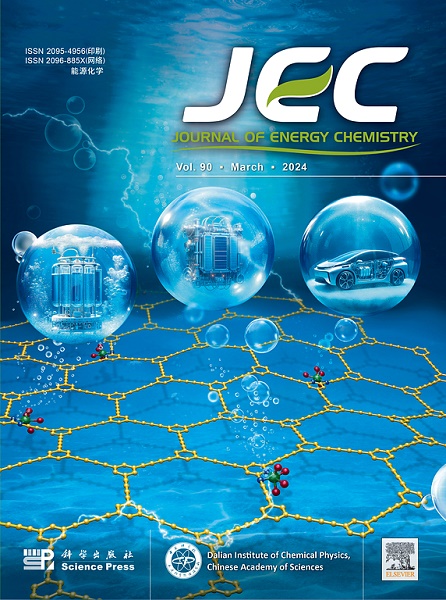Encapsulating Sb atoms in highly conductive Cu-S frameworks for fast and robust sodium storage
IF 13.1
1区 化学
Q1 Energy
引用次数: 0
Abstract
Sodium ion batteries (SIBs) currently lack sufficient anode materials that simultaneously demonstrate exceptional capacity, durability under prolonged cycling, and rapid charging capabilities. Antimony (Sb) has emerged as an attractive alloy-based anode candidate due to its notable theoretical capacity, nevertheless grappling with significant challenges including substantial structural deformation during operation and sluggish ion transport kinetics. Herein, we atomically disperse Sb into open Cu-S frameworks with high cyclic stability and good conductivity. In-situ and ex-situ analyses reveal the multistep reversible reaction processes during the charging (formation of Cu3SbS4) and discharging (precipitation of fracture-resistant Na3Sb in the ionic-conductive NaxCu2S2/Na2S matrix) processes. As a result, the thoughtfully engineered Cu3SbS4 anode, without requiring additional carbon compositing, attains a high reversible specific capacity of 597 mAh g−1 at a 0.3 C rate. It also maintains approximately 95% capacity retention even at 15 C after 4300 cycles. The assembled Cu3SbS4||Na3V2(PO4)3 full cell achieves 10 C high rate performance and demonstrates excellent cycling stability of ∼94.0% capacity retention after 200 cycles. Our approach to material design might offer a novel method for creating durable, high-capacity, and high-rate anode materials for sodium-ion batteries.

求助全文
约1分钟内获得全文
求助全文
来源期刊

Journal of Energy Chemistry
CHEMISTRY, APPLIED-CHEMISTRY, PHYSICAL
CiteScore
19.10
自引率
8.40%
发文量
3631
审稿时长
15 days
期刊介绍:
The Journal of Energy Chemistry, the official publication of Science Press and the Dalian Institute of Chemical Physics, Chinese Academy of Sciences, serves as a platform for reporting creative research and innovative applications in energy chemistry. It mainly reports on creative researches and innovative applications of chemical conversions of fossil energy, carbon dioxide, electrochemical energy and hydrogen energy, as well as the conversions of biomass and solar energy related with chemical issues to promote academic exchanges in the field of energy chemistry and to accelerate the exploration, research and development of energy science and technologies.
This journal focuses on original research papers covering various topics within energy chemistry worldwide, including:
Optimized utilization of fossil energy
Hydrogen energy
Conversion and storage of electrochemical energy
Capture, storage, and chemical conversion of carbon dioxide
Materials and nanotechnologies for energy conversion and storage
Chemistry in biomass conversion
Chemistry in the utilization of solar energy
 求助内容:
求助内容: 应助结果提醒方式:
应助结果提醒方式:


